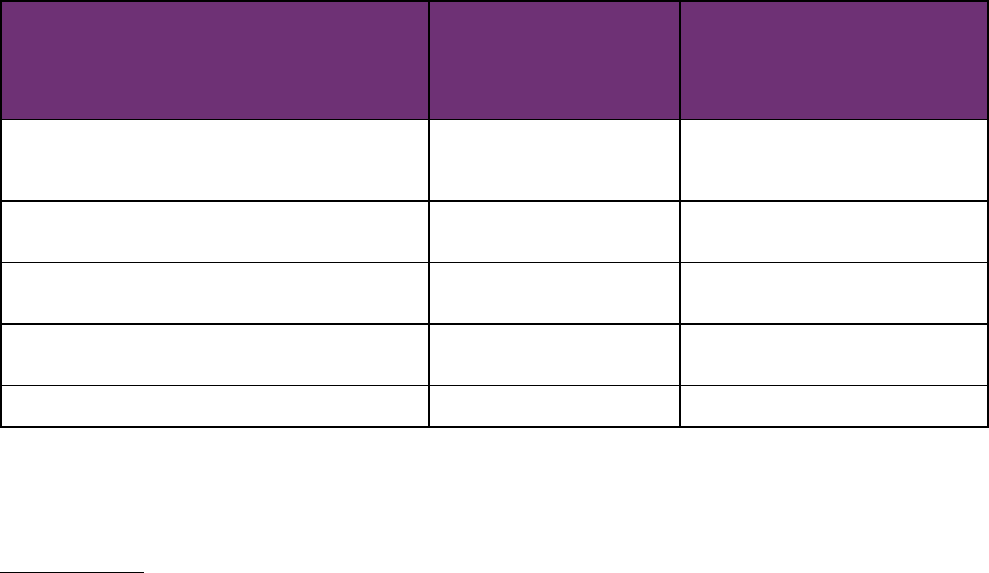
ANEMPLOYEE’SGUIDETO
HEALTHBENEFITSUNDER
COBRA
EMPLOYEE BENEFITS SECURITY ADMINISTRATION
UNITED STATES DEPARTMENT OF LABOR

This publication has been developed by the U.S. Department of Labor,
Employee Benefits Security Administration (EBSA).
To view this and other publications, visit the agency’s Website at dol.gov/agencies/ebsa.
To order publications, or to speak with a benefits advisor, contact EBSA electronically at
askebsa.dol.gov.
Or call toll free: 1-866-444-3272
This material will be made available in alternative format
to persons with disabilities upon request:
Voice phone: (202) 693-8664
TTY: (202) 501-3911
This booklet constitutes a small entity compliance guide for purposes of the
Small Business Regulatory Enforcement Fairness Act of 1996.

Contents
Introduction ..............................................................................................1
What Is COBRA Continuation Coverage? .............................................2
Who Is Entitled to Continuation Coverage? ..........................................4
Your COBRA Rights and Responsibilities:
Notice and Election Procedures ...........................................................5
Benefits under Continuation Coverage ..................................................8
Duration of Continuation Coverage ........................................................ 8
Chart: Summary of Qualifying Events,
Qualified Beneficiaries, and
Maximum Periods of Continuation Coverage ......................................10
Paying for Continuation Coverage .......................................................11
Health Coverage Tax Credit ...................................................................11
Coordination with Other Federal Benefit Laws ...................................12
Role of the Federal Government ...........................................................12
Resources ...............................................................................................13

AN EMPLOYEE’S GUIDE TO HEALTH BENEFITS UNDER COBRA
1
Introduction
A health plan helps workers and their families
take care of their essential medical needs. It is
one of the most important benefits provided
by an employer.
There was a time when employer-provided group health coverage was at risk if an
employee was fired, changed jobs, or got divorced. Under the Consolidated Omnibus
Budget Reconciliation Act (COBRA), many employees and their families who would lose
group health coverage because of serious life events are able to continue their coverage
under the employer’s group health plan, usually at their own expense, at least for limited
periods of time.
This booklet explains your rights under COBRA to a temporary extension of employer-provided group health coverage,
called COBRA continuation coverage.
This booklet will:
•
Provide a general explanation of your COBRA rights and responsibilities;
•
Outline the COBRA rules that group health plans must follow;
•
Highlight your rights to benets while you are receiving COBRA continuation coverage.
UNITED STATES DEPARTMENT OF LABOR
2
What Is COBRA Continuation Coverage?
The Consolidated Omnibus Budget Reconciliation Act (COBRA) requires most group health plans to provide a temporary
continuation of group health coverage that otherwise might be terminated.
COBRA requires continuation coverage to be offered to covered employees, their spouses, their former spouses, and
their dependent children when group health coverage would otherwise be lost due to certain specific events. Those events
include the death of a covered employee, termination or reduction in the hours of a covered employee’s employment
for reasons other than gross misconduct, divorce or legal separation from a covered employee, a covered employee’s
becoming entitled to Medicare, and a child’s loss of dependent status (and therefore coverage) under the plan.
Employers may require individuals who elect continuation coverage to pay the full cost of the coverage, plus a 2 percent
administrative charge. The required payment for continuation coverage is often more expensive than the amount that
active employees are required to pay for group health coverage, since the employer usually pays part of the cost of
employees’ coverage and all of that cost can be charged to the individuals receiving continuation coverage. While
COBRA continuation coverage must be offered, it lasts only for a limited period of time. This booklet will discuss all of
these provisions in more detail.
COBRA generally applies to all group health plans maintained by private-sector employers (with at least 20 employees)
or by state and local governments. The law does not apply, however, to plans sponsored by the Federal Government or by
churches and certain church-related organizations. In addition, many states have laws similar to COBRA, including those
that apply to health insurers of employers with less than 20 employees (sometimes called mini-COBRA). Check with your
state insurance commissioner’s office to see if such coverage is available to you.
Under COBRA, a group health plan is any arrangement that an employer establishes or maintains to provide employees
or their families with medical care, whether it is provided through insurance, by a health maintenance organization, out of
the employer’s assets on a pay-as-you-go basis, or otherwise. “Medical care” typically covered by a group health plan for
this purpose includes:
•
Inpatient and outpatient hospital care;
•
Physician care;
•
Surgery and other major medical benets;
•
Prescription drugs;
•
Dental and vision care.
Life insurance is not considered “medical care,” nor are disability benefits. COBRA does not cover plans that provide
only life insurance or disability benefits.
Group health plans covered by COBRA that are sponsored by private-sector employers generally are governed by ERISA
– the Employee Retirement Income Security Act of 1974. ERISA does not require employers to establish plans or to
provide any particular type or level of benefits, but it does require plans to comply with ERISA’s rules. ERISA gives
participants and beneficiaries rights that are enforceable in court.
AN EMPLOYEE’S GUIDE TO HEALTH BENEFITS UNDER COBRA
3
Alternatives to COBRA Continuation Coverage
If you become entitled to elect COBRA continuation coverage when you otherwise would lose group health coverage
under a group health plan, you should consider all options you may have to get other health coverage before you make
your decision. There may be more affordable or more generous coverage options for you and your family through other
group health plan coverage (such as a spouse’s plan), the Health Insurance Marketplace, or Medicaid.
Under the Health Insurance Portability and Accountability Act (HIPAA), if you or your dependents are losing eligibility
for group health coverage, including eligibility for continuation coverage, you may have a right to special enroll (enroll
without waiting until the next open season for enrollment) in other group health coverage. For example, an employee
losing eligibility for group health coverage may be able to special enroll in a spouse’s plan. A dependent losing eligibility
for group health coverage may be able to enroll in a different parent’s group health plan. To have a special enrollment
opportunity, you or your dependent must have had other health coverage when you previously declined coverage in the
plan in which you now want to enroll. You must request special enrollment within 30 days from the loss of your job-based
coverage.
Losing your job-based health coverage is also a special enrollment event in the Health Insurance Marketplace
(Marketplace). The Marketplace offers “one-stop shopping” to find and compare private health insurance options. In
the Marketplace, you could be eligible for a tax credit that lowers your monthly premiums and cost-sharing reductions
(amounts that lower your out-of-pocket costs for deductibles, coinsurance, and copayments), and you can see what your
premium, deductibles, and out-of-pocket costs will be before you make a decision to enroll.
Eligibility for COBRA
continuation coverage won’t limit your eligibility for Marketplace coverage or for a tax credit.
You can apply for Marketplace coverage at HealthCare.gov or by calling 1-800-318-2596 (TTY 1-855-889-
4325). To qualify for special enrollment in a Marketplace plan, you must select a plan within 60 days before or 60 days
after losing your job-based coverage. In addition, during an open enrollment period, anyone can enroll in Marketplace
coverage. If you need health coverage in the time between losing your job-based coverage and beginning coverage
through the Marketplace (for example, if you or a family member needs medical care), you may wish to elect COBRA
coverage from your former employer’s plan. COBRA continuation coverage will ensure you have health coverage until
the coverage through your Marketplace plan begins.
Through the Marketplace you can also learn if you qualify for free or low-cost coverage from Medicaid or the Children’s
Health Insurance Program (CHIP). You can apply for and enroll in Medicaid or CHIP any time of year. If you qualify,
your coverage begins immediately. Visit HealthCare.gov or call 1-800-318-2596 (TTY 1-855-889-4325)
for more information or to apply for these programs. You can also apply for Medicaid by contacting your state Medicaid
office and learn more about the CHIP program in your state by calling 1-877-KIDS NOW (543-7669) or visiting
insurekidsnow.gov on the Web.
If you or your dependent elects COBRA continuation coverage, you will have another opportunity to request special
enrollment in a group health plan or a Marketplace plan if you have a new special enrollment event, such as marriage,
the birth of a child, or if you exhaust your continuation coverage. To exhaust COBRA continuation coverage, you or your
dependent must receive the maximum period of continuation coverage available without early termination. Keep in mind
if you choose to terminate your COBRA continuation coverage early with no special enrollment opportunity at that time,
you generally will have to wait to enroll in other coverage until the next open enrollment period for the new group health
plan or the Marketplace.
UNITED STATES DEPARTMENT OF LABOR
4
Who Is Entitled to Continuation Coverage?
There are three basic requirements that must be met in order for you to be entitled to elect COBRA continuation coverage:
•
Your group health plan must be covered by COBRA;
•
A qualifying event must occur; and
•
You must be a qualied beneciary for that event.
Plan Coverage
COBRA covers group health plans sponsored by an employer (private-sector or state/local government) that employed at
least 20 employees on more than 50 percent of its typical business days in the previous calendar year. Both full- and part-
time employees are counted to determine whether a plan is subject to COBRA. Each part-time employee counts as a fraction
of a full-time employee, with the fraction equal to the number of hours that the part-time employee worked divided by the
hours an employee must work to be considered full-time.
Qualifying Events
“Qualifying events” are events that cause an individual to lose his or her group health coverage. The type of qualifying
event determines who the qualified beneficiaries are for that event and the period of time that a plan must offer continuation
coverage. COBRA establishes only the minimum requirements for continuation coverage. A plan may always choose to
provide longer periods of continuation coverage.
The following are qualifying events for a covered employee if they cause the covered employee to lose coverage:
•
Termination of the employee’s employment for any reason other than “gross misconduct”; or
•
Reduction in the number of hours of employment.
The following are qualifying events for the spouse and dependent child of a covered employee if they cause the spouse or
dependent child to lose coverage:
•
Termination of the covered employee’s employment for any reason other than “gross misconduct”;
•
Reduction in the hours worked by the covered employee;
•
Covered employee becomes entitled to Medicare;
•
Divorce or legal separation of the spouse from the covered employee; or
•
Death of the covered employee.
In addition to the above, the following is a qualifying event for a dependent child of a covered employee if it causes the
child to lose coverage:
•
Loss of “dependent child” status under the plan rules. Under the Affordable Care Act, plans that offer coverage to
children on their parents’ plan must make the coverage available until the adult child reaches the age of 26.
AN EMPLOYEE’S GUIDE TO HEALTH BENEFITS UNDER COBRA
5
Qualified Beneficiaries
A qualified beneficiary is an individual who was covered by a group health plan on the day before a qualifying event
occurred that caused him or her to lose coverage. Only certain individuals can become qualified beneficiaries due to a
qualifying event, and the type of qualifying event determines who can become a qualified beneficiary when it happens. A
qualified beneficiary must be a covered employee, the employee’s spouse or former spouse, or the employee’s dependent
child. In certain cases involving the bankruptcy of the employer sponsoring the plan, a retired employee, the retired
employee’s spouse (or former spouse), and the retired employee’s dependent children may be qualified beneficiaries.
In addition, any child born to or placed for adoption with a covered employee during a period of continuation coverage
is automatically considered a qualified beneficiary. An employer’s agents, independent contractors, and directors who
participate in the group health plan may also be qualified beneficiaries.
Your COBRA Rights and Responsibilities:
Notice and Election Procedures
Under COBRA, group health plans must provide covered employees and their families with certain notices explaining their
COBRA rights. Plans must also have rules for how COBRA continuation coverage is offered, how qualified beneficiaries
may elect continuation coverage, and when it can be terminated.
Notice Procedures
Summary Plan Description
The COBRA rights provided under the plan must be described in the plan’s Summary Plan Description (SPD). The SPD
is a written document that gives important information about the plan, including what benefits are available under the
plan, the rights of participants and beneficiaries under the plan, and how the plan works. ERISA requires group health
plans to give you an SPD within 90 days after you first become a participant in a plan (or within 120 days after the plan
is first subject to the reporting and disclosure provisions of ERISA). In addition, if there are material changes to the plan,
the plan must give you a Summary of Material Modifications (SMM) not later than 210 days after the end of the plan year
in which the changes become effective; if the change is a material reduction in covered services or benefits, the SMM must
be furnished not later than 60 days after the reduction is adopted. A participant or beneficiary covered under the plan may
request a copy of the SPD and any SMMs (as well as any other plan documents), which must be provided within 30 days of
a written request.
COBRA General Notice
Group health plans must give each employee and each spouse who becomes covered under the plan a general notice
describing COBRA rights. The general notice must be provided within the first 90 days of coverage. Group health plans
can satisfy this requirement by giving you the plan’s SPD within this time period, as long as it contains the general notice
information. The general notice should contain the information that you need to know in order to protect your COBRA
rights when you first become covered under the plan, including the name of the plan and someone you can contact for more
information, a general description of the continuation coverage provided under the plan, and an explanation of any notices
you must give the plan to protect your COBRA rights.
UNITED STATES DEPARTMENT OF LABOR
6
COBRA Qualifying Event Notices
Before a group health plan must offer continuation coverage, a qualifying event must occur, and the group health plan must
be notified of the qualifying event. Who must give notice of the qualifying event depends on the type of qualifying event.
The employer must notify the plan if the qualifying event is:
•
Termination or reduction in hours of employment of the covered employee;
•
Death of the covered employee;
•
A covered employee becoming entitled to Medicare; or
•
Bankruptcy of a private-sector employer.
The employer must notify the plan within 30 days of the event.
You (the covered employee or one of the qualified beneficiaries) must notify the plan if the qualifying event is:
•
Divorce;
•
Legal separation; or
•
A child’s loss of dependent status under the plan.
You should understand your plan’s rules for how to provide notice if one of these qualifying events occurs. The plan must
have procedures for how to give notice of the qualifying event, and the procedures should be described in both the general
notice and the plan’s SPD. The plan can set a time limit for providing this notice, but the time limit cannot be shorter than
60 days, starting from the latest of: (1) the date on which the qualifying event occurs; (2) the date on which you lose (or
would lose) coverage under the plan as a result of the qualifying event; or (3) the date on which you are informed, through
the furnishing of either the SPD or the COBRA general notice, of the responsibility to notify the plan and the procedures
for doing so.
If your plan does not have reasonable procedures for how to give notice of a qualifying event, you can give notice by
contacting the person or unit that handles your employer’s employee benefits matters. If your plan is a multiemployer plan,
notice can also be given to the joint board of trustees, and, if the plan is administered by an insurance company (or the
benefits are provided through insurance), notice can be given to the insurance company.
COBRA Election Notice
When the plan receives a notice of a qualifying event, the plan must give the qualified beneficiaries an election notice,
which describes their rights to continuation coverage and how to make an election. The notice must be provided to
the qualified beneficiaries within 14 days after the plan administrator receives the notice of a qualifying event. The
election notice should contain all of the information you will need to understand continuation coverage and make an
informed decision whether or not to elect continuation coverage. It should also give you the name of the plan’s COBRA
administrator and tell you how to get more information.
COBRA Notice of Unavailability of Continuation Coverage
Group health plans may sometimes deny a request for continuation coverage or for an extension of continuation coverage.
If you or any member of your family requests continuation coverage or an extension of continuation coverage and the plan
determines that you or your family member is not entitled to the requested coverage for any reason, the plan must give the
person who requested it a notice of unavailability of continuation coverage. The notice must be provided within 14 days
after the request is received, and the notice must explain the reason for denying the request.

AN EMPLOYEE’S GUIDE TO HEALTH BENEFITS UNDER COBRA
7
COBRA Notice of Early Termination of Continuation Coverage
Continuation coverage must generally be made available for a maximum period (18, 29, or 36 months). The group
health plan may terminate continuation coverage earlier, however, for any number of specific reasons. (See “Duration of
Continuation Coverage” later in this booklet.) When a group health plan decides to terminate continuation coverage early
for any of these reasons, the plan must give the qualified beneficiary a notice of early termination. The notice must be
given as soon as practicable after the decision is made, and it must describe the date coverage will terminate, the reason for
termination, and any rights the qualified beneficiary may have under the plan or applicable law to elect alternative group or
individual coverage.
Special Rules for Multiemployer Plans
Multiemployer plans are allowed to adopt some special rules for COBRA notices. First, a multiemployer plan may adopt
its own uniform time limits for the qualifying event notice or the election notice. A multiemployer plan also may choose
not to require employers to provide qualifying event notices, and instead to have the plan administrator determine when a
qualifying event has occurred. Any special multiemployer plan rules must be set out in the plan’s documents (and SPD).
Election Procedures
If you are entitled to elect COBRA continuation coverage, you must be given an election period of at least 60 days (starting
on the later of the date you are furnished the election notice or the date you would lose coverage) to choose whether or not
to elect continuation coverage.
Each of the qualified beneficiaries for a qualifying event may independently elect continuation coverage. This means that
if both you and your spouse are entitled to elect continuation coverage, you each may decide separately whether to do so.
The covered employee or the spouse must be allowed, however, to elect on behalf of any dependent children or on behalf
of all of the qualified beneficiaries. A parent or legal guardian may elect on behalf of a minor child.
If you waive continuation coverage during the election period, you must be permitted later to revoke your waiver of
coverage and to elect continuation coverage as long as you do so during the election period. Under those circumstances,
the plan need only provide continuation coverage beginning on the date you revoke the waiver.
Certain Trade Adjustment Assistance (TAA) Program participants have a second opportunity to elect COBRA continuation
coverage. Individuals who are eligible and receive Trade Readjustment Allowances (TRA), individuals who would be

UNITED STATES DEPARTMENT OF LABOR
8
eligible to receive TRA, but have not yet exhausted their unemployment insurance (UI) benefits, and individuals receiving
benefits under Alternative Trade Adjustment Assistance (ATAA) or Reemployment Trade Adjustment Assistance (RTAA),
and who did not elect COBRA during the general election period, may get a second election period. This additional,
second election period is measured 60 days from the first day of the month in which an individual is determined eligible for
the TAA benefits listed above and receives such benefit. For example, if an individual’s general election period runs out
and he or she is determined eligible for TRA (or would be eligible for TRA but have not exhausted UI benefits) or begin to
receive ATAA or RTAA benefits 61 days after separating from employment, at the beginning of the month, he or she would
have approximately 60 more days to elect COBRA. However, if this same individual does not meet the eligibility criteria
until the end of the month, the 60 days are still measured from the first of the month, in effect giving the individual about
30 days. Additionally, a COBRA election must be made not later than 6 months after the date of the TAA-related loss
of coverage. COBRA coverage chosen during the second election period typically begins on the first day of that period.
More information about the Trade Act is available at doleta.gov/tradeact/.
Benefits under Continuation Coverage
If you elect continuation coverage, the coverage you are given must be identical to the coverage that is currently available
under the plan to similarly situated active employees and their families (generally, this is the same coverage that you had
immediately before the qualifying event). You will also be entitled, while receiving continuation coverage, to the same
benefits, choices, and services that a similarly situated participant or beneficiary is currently receiving under the plan, such
as the right during an open enrollment season to choose among available coverage options. You will also be subject to the
same rules and limits that would apply to a similarly situated participant or beneficiary, such as co-payment requirements,
deductibles, and coverage limits. The plan’s rules for filing benefit claims and appealing any claims denials also apply.
Any changes made to the plan’s terms that apply to similarly situated active employees and their families will also apply
to qualified beneficiaries receiving COBRA continuation coverage. If a child is born to or adopted by a covered employee
during a period of continuation coverage, the child is automatically considered to be a qualified beneficiary receiving
continuation coverage. You should consult your plan for the rules that apply for adding your child to continuation coverage
under those circumstances.
Duration of Continuation Coverage
Maximum Periods
COBRA requires that continuation coverage extend from the date of the qualifying event for a limited period of time of
18 or 36 months. The length of time for which continuation coverage must be made available (the “maximum period” of
continuation coverage) depends on the type of qualifying event that gave rise to the COBRA rights. A plan, however, may
provide longer periods of coverage beyond the maximum period required by law.
When the qualifying event is the covered employee’s termination of employment or reduction in hours of employment,
qualified beneficiaries are entitled to 18 months of continuation coverage.
When the qualifying event is the end of employment or reduction of the employee’s hours, and the employee became entitled
to Medicare less than 18 months before the qualifying event, COBRA coverage for the employee’s spouse and dependents can
last until 36 months after the date the employee becomes entitled to Medicare. For example, if a covered employee becomes
entitled to Medicare 8 months before the date his/her employment ends (termination of employment is the COBRA qualifying
event), COBRA coverage for his/her spouse and children would last 28 months (36 months minus 8 months).
For all other qualifying events, qualified beneficiaries must be provided 36 months of continuation coverage.
1
1
Under COBRA, certain retirees and their family members who receive post-retirement health coverage from employers have special COBRA rights in the event
that the employer is involved in bankruptcy proceedings begun on or after July 1, 1986. This booklet does not fully describe the COBRA rights of that group.
AN EMPLOYEE’S GUIDE TO HEALTH BENEFITS UNDER COBRA
9
Early Termination
A group health plan may terminate continuation coverage earlier than the end of the maximum period for any of the
following reasons:
•
Premiums are not paid in full on a timely basis;
•
The employer ceases to maintain any group health plan;
•
A qualied beneciary begins coverage under another group health plan after electing continuation coverage;
•
A qualied beneciary becomes entitled to Medicare benets after electing continuation coverage; or
•
A qualied beneciary engages in conduct that would justify the plan in terminating coverage of a similarly
situated participant or beneciary not receiving continuation coverage (such as fraud).
If continuation coverage is terminated early, the plan must provide the qualified beneficiary with an early termination
notice. (See “Your COBRA Rights and Responsibilities” earlier in this booklet.)
If you decide to terminate your COBRA coverage early, you generally won’t be able to get a Marketplace plan outside of
the open enrollment period. (See “Alternatives to COBRA Continuation Coverage” earlier in this booklet.)
Extension of an 18-month Period of Continuation Coverage
If you are entitled to an 18-month maximum period of continuation coverage, you may become eligible for an extension of
the maximum time period in two circumstances. The first is when a qualified beneficiary (either you or a family member)
is disabled; the second is when a second qualifying event occurs.
Disability
If any one of the qualified beneficiaries in your family is disabled and meets certain requirements, all of the qualified
beneficiaries receiving continuation coverage due to a single qualifying event are entitled to an 11-month extension of the
maximum period of continuation coverage (for a total maximum period of 29 months of continuation coverage). The plan
can charge qualified beneficiaries an increased premium, up to 150 percent of the cost of coverage, during the 11-month
disability extension. The requirements are, first, that the Social Security Administration (SSA) determines that the disabled
qualified beneficiary is disabled before the 60th day of continuation coverage and, second, that the disability continues
during the rest of the 18-month period of continuation coverage.
The disabled qualified beneficiary or another person on his or her behalf also must notify the plan of the SSA
determination. The plan can set a time limit for providing this notice of disability, but the time limit cannot be shorter than
60 days, starting from the latest of: (1) the date on which SSA issues the disability determination; (2) the date on which the
qualifying event occurs; (3) the date on which the qualified beneficiary loses (or would lose) coverage under the plan as a
result of the qualifying event; or (4) the date on which the qualified beneficiary is informed, through the furnishing of the
SPD or the COBRA general notice, of the responsibility to notify the plan and the procedures for doing so.
The right to the disability extension may be terminated if the SSA determines that the disabled qualified beneficiary is no
longer disabled. The plan can require qualified beneficiaries receiving the disability extension to notify it if the SSA makes
such a determination, although the plan must give the qualified beneficiaries at least 30 days after the SSA determination to
do so.
The rules for how to give a disability notice and a notice of no longer being disabled should be described in the plan’s SPD
(and in the election notice if you are offered an 18-month maximum period of continuation coverage).

UNITED STATES DEPARTMENT OF LABOR
10
Second Qualifying Event
If you are receiving an 18-month maximum period of continuation coverage, you may become entitled to an 18-month
extension (giving a total maximum period of 36 months of continuation coverage) if you experience a second qualifying
event that is the death of a covered employee, the divorce or legal separation of a covered employee and spouse, a covered
employee’s becoming entitled to Medicare (in certain circumstances), or a loss of dependent child status under the plan.
The second event can be a second qualifying event only if it would have caused you to lose coverage under the plan in the
absence of the first qualifying event. If a second qualifying event occurs, you will need to notify the plan.
The rules for how to give notice of a second qualifying event should be described in the plan’s SPD (and in the election
notice if you are offered an 18-month maximum period of continuation coverage). The plan can set a time limit for providing
this notice, but the time limit cannot be shorter than 60 days from the latest of: (1) the date on which the qualifying event
occurs; (2) the date on which you lose (or would lose) coverage under the plan as a result of the qualifying event; or (3) the
date on which you are informed, through the furnishing of either the SPD or the COBRA general notice, of the responsibility
to notify the plan and the procedures for doing so.
Summary of Qualifying Events, Qualified Beneficiaries, and
Maximum Periods of Continuation Coverage
The following chart shows the specific qualifying events, the qualified beneficiaries who are entitled to elect continuation
coverage, and the maximum period of continuation coverage that must be offered, based on the type of qualifying event.
Note that an event is a qualifying event only if it would cause the qualified beneficiary to lose coverage under the plan.
QUALIFYING EVENT
QUALIFIED
BENEFICIARIES
MAXIMUM PERIOD OF
CONTINUATION
COVERAGE
Termination (for reasons other than gross
misconduct) or reduction in hours of employment
Employee
Spouse
Dependent Child
18 months
2
Employee enrollment in Medicare Spouse
Dependent Child
36 months
3
Divorce or legal separation Spouse
Dependent Child
36 months
Death of employee Spouse
Dependent Child
36 months
Loss of “dependent child” status under the plan Dependent Child 36 months
2
3
2
In certain circumstances, qualified beneficiaries entitled to 18 months of continuation coverage may become entitled to a disability extension of an
additional 11 months (for a total maximum of 29 months) or an extension of an additional 18 months due to the occurrence of a second qualifying event
(for a total maximum of 36 months). (See “Duration of Continuation Coverage” earlier in this booklet.)
3
The actual period of continuation coverage may vary depending on factors such as whether the Medicare entitlement occurred prior to or after the end of the
covered employee’s employment or reduction in hours. For more information see “Duration of Continuation Coverage” earlier in this booklet or contact the
Department of Labor’s Employee Benets Security Administration (EBSA) electronically at askebsa.dol.gov or by calling 1-866-444-3272.
AN EMPLOYEE’S GUIDE TO HEALTH BENEFITS UNDER COBRA
11
Paying for Continuation Coverage
Your group health plan can require you to pay for COBRA continuation coverage. The amount charged to qualified
beneficiaries cannot exceed 102 percent of the cost to the plan for similarly situated individuals covered under the plan who
have not incurred a qualifying event. In determining COBRA premiums, the plan can include the costs paid by employees
and the employer, plus an additional 2 percent for administrative costs.
For qualified beneficiaries receiving the 11-month disability extension, the COBRA premium for those additional months
may be increased to 150 percent of the plan’s total cost of coverage for similarly situated individuals.
COBRA charges to qualified beneficiaries may be increased if the cost to the plan increases but generally must be fixed in
advance of each 12-month premium cycle. The plan must allow you to pay the required premiums on a monthly basis if
you ask to do so, and the plan may allow you to make payments at other intervals (for example, weekly or quarterly). The
election notice should contain all of the information you need to understand the COBRA premiums you will have to pay,
when they are due, and the consequences of late payment or nonpayment.
When you elect continuation coverage, you cannot be required to send any payment with your election form. You can be
required, however, to make an initial premium payment within 45 days after the date of your COBRA election (that is the
date you mail in your election form, if you use first-class mail). Failure to make any payment within that period of time
could cause you to lose all COBRA rights. The plan can set premium due dates for successive periods of coverage (after
your initial payment), but it must give you the option to make monthly payments, and it must give you a 30-day grace
period for payment of any premium.
You should be aware that if you do not pay a premium by the first day of a period of coverage, but pay the premium within
the grace period for that period of coverage, the plan has the option to cancel your coverage until payment is received and
then reinstate the coverage retroactively back to the beginning of the period of coverage. Failure to make payment in full
before the end of a grace period could cause you to lose all COBRA rights.
If the amount of a payment made to the plan is incorrect, but is not significantly less than the amount due, the plan is
required to notify you of the deficiency and grant a reasonable period (for this purpose, 30 days is considered reasonable) to
pay the difference. The plan is not obligated to send monthly premium notices.
Some employers may subsidize or pay the entire cost of health coverage, including COBRA coverage, for terminating
employees and their families as part of a severance agreement. If you are receiving this type of severance benefit, talk to
your plan administrator about how this impacts your COBRA coverage or your special enrollment rights.
Health Coverage Tax Credit
Certain individuals may be eligible for a refundable Federal income tax credit that can help with qualified monthly
premium payments. The Health Coverage Tax Credit (HCTC), while available, may be used to pay for specified types of
health insurance coverage (including COBRA continuation coverage).
Those potentially eligible for the HCTC include workers who lose their jobs due to the negative effects of global trade
and who are eligible to receive certain benefits under the Trade Adjustment Assistance (TAA) Program, as well as certain
individuals who are receiving pension payments from the Pension Benefit Guaranty Corporation (PBGC). The HCTC pays
72.5 percent of qualified health insurance premiums, with individuals paying 27.5 percent. For more information on TAA,
visit doleta.gov/tradeact/.
UNITED STATES DEPARTMENT OF LABOR
12
Individuals who are eligible for the HCTC may claim the tax credit on their income tax returns at the end of the year. The
tax credit also may be available as an advance monthly payment beginning in 2017. Qualified family members of eligible
TAA recipients or PBGC payees who enroll in Medicare, pass away, or finalize a divorce, are eligible to receive the HCTC
for up to 24 months from the month of the event.
Individuals with questions about the Health Coverage Tax Credit should visit IRS.gov/HCTC.
Coordination with Other Federal Benefit Laws
The Family and Medical Leave Act (FMLA) requires an employer to maintain coverage under any “group health plan”
for an employee on FMLA leave under the same conditions coverage would have been provided if the employee had
continued working. Group health coverage that is provided under the FMLA during a family or medical leave is NOT
COBRA continuation coverage, and taking FMLA leave is not a qualifying event under COBRA. A COBRA qualifying
event may occur,
however, when an employer’s obligation to maintain health benefits under FMLA ceases, such as
when an employee taking FMLA leave decides not to return to work and notifies an employer of his or her intent not to
return to work.
The Affordable Care Act (ACA) provides additional protections for coverage under employment-based group health plans,
including COBRA continuation coverage. These include:
•
Extending dependent child coverage to age 26;
•
Prohibiting limits or exclusions from coverage for preexisting conditions;
•
Banning lifetime or annual dollar limits on coverage for essential health benets; and
•
Requiring group health plans and insurers to provide an easy-to-understand summary of a health plan’s
benets and coverage.
Additional protections that may apply to your employer’s plan include coverage for:
•
Certain preventive services (such as blood pressure, diabetes and cholesterol tests, regular well-baby and well-
child visits, routine vaccinations and many cancer screenings) without cost sharing, and
•
Emergency services in an emergency department of a hospital outside your plan’s network without prior approval
from your health plan.
Medicare is the Federal health insurance program for people who are 65 or older and certain younger people with
disabilities or End-Stage Renal Disease. If you are enrolled in Medicare as well as COBRA continuation coverage, there
may be special coordination of benefits rules that determine which coverage is the primary payer of benefits. Check your
Summary Plan Description to see if special rules apply or ask your plan administrator.
Role of the Federal Government
COBRA continuation coverage laws are administered by several agencies. The Departments of Labor and the Treasury
have jurisdiction over private-sector group health plans. The Department of Health and Human Services administers the
continuation coverage law as it applies to state and local government health plans.
The Labor Department’s interpretive responsibility for COBRA is limited to the disclosure and notification requirements
of COBRA. The Labor Department has issued regulations on the COBRA notice provisions. The Treasury Department has
interpretive responsibility to define the required continuation coverage. The Internal Revenue Service, Department of the
Treasury, has issued regulations on COBRA provisions relating to eligibility, coverage, and payment. The Departments of
Labor and the Treasury share jurisdiction for enforcement of these provisions.
AN EMPLOYEE’S GUIDE TO HEALTH BENEFITS UNDER COBRA
13
Resources
If you need further information about COBRA, ACA, HIPAA, or ERISA, visit the Employee Benefits Security
Administration’s (EBSA’s) Website at dol.gov/agencies/ebsa. Or you may contact EBSA electronically at
askebsa.dol.gov or call toll free 1-866-444-3272.
The Centers for Medicare and Medicaid Services offer information about COBRA provisions for public-sector employees.
To find out more, visit cms.gov or contact the agency via email at [email protected]v or by calling toll free at
1-877-267-2323, option #4, ext. 61565.
Federal employees are covered by a Federal law similar to COBRA. Those employees should contact the personnel office
serving their agency for more information on temporary extensions of health benefits.
To find out more about enrolling in the Health Insurance Marketplace, such as when the next open enrollment period will
be and what you need to know about qualifying events and special enrollment periods, visit HealthCare.gov.
Further information on FMLA is available on the Website of the U.S. Department of Labor’s Wage and Hour Division at
dol.gov/whd or by calling toll-free 1-866-487-9243.
For more information on Medicare, visit Medicare.gov or call 1-800-MEDICARE.
For information on the Trade Adjustment Assistance (TAA) Program, visit doleta.gov/tradeact/. For information
about the Health Coverage Tax Credit (HCTC), visit IRS.gov/HCTC.


EMPLOYEE BENEFITS SECURITY ADMINISTRATION
UNITED STATES DEPARTMENT OF LABOR
September 2016
